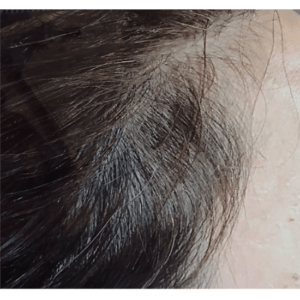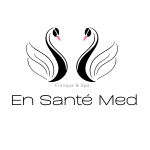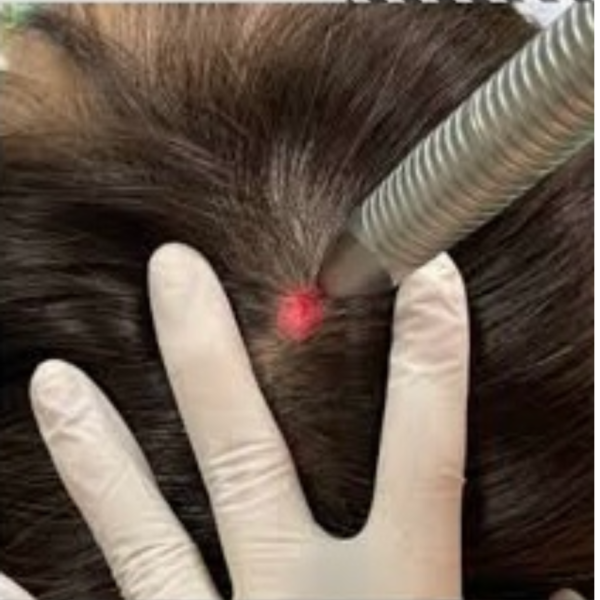Best Topical Treatment for Hair Loss
Female patterned hair loss, also known as female androgeneic alopecia, is a common and distressing condition that affects millions of women worldwide. While it doesn’t typically lead to complete baldness like in men, it causes noticeable thinning of hair—especially around the part line and crown of the scalp. Understanding the causes and available treatments can help women manage this condition effectively and restore both hair and confidence.
What Is Female Patterned Hair Loss?
Female patterned hair loss is a genetically influenced condition characterized by a gradual reduction in hair volume. It usually starts with thinning at the center part, followed by a wider gap that becomes more visible over time. This condition is most commonly seen in women after the age of 40 but can start earlier due to hormonal imbalances, genetics, or medical conditions.
Common Causes of Female Pattern Hair Loss Include:
- Genetics (family history of hair loss)
- Hormonal changes (e.g., menopause, polycystic ovary syndrome)
- Aging
- Stress or illness
- Nutrient deficiencies (iron, vitamin D)
So what is the best topical treatment for female hair loss?
Treatment for hair loss has advanced to the point that the question isn’t so much what is the best topical treatment but rather what is the best treatment overall for hair loss. As we will find in the discussion below, topical management of hair loss while it may be simple, low cost and low key, it has its set of shortcomings that should be considered.
Top 5 Treatment Options for Female Patterned Hair Loss
Fortunately, there are several effective treatments for female hair thinning, ranging from topical solutions to advanced medical therapies. Here’s a breakdown of the most commonly recommended options:
1. Topical Minoxidil (Rogaine for Women)
- What it is: An over-the-counter liquid or foam applied directly to the scalp.
- How it works: Reactivates dormant hair follicles to promote hair regrowth and slow down further thinning.
- How to use: Apply once or twice daily to the affected area.
- Side effects: Mild scalp irritation; rare cases of unwanted facial hair growth.
2. Oral Minoxidil
- What it is: A prescription medication taken by mouth.
- How it works: Delivers minoxidil systemically to encourage hair growth throughout the scalp.
- How to use: Usually prescribed in low doses, taken once daily.
- Side effects: Can include low blood pressure, swelling, or increased body hair in other areas.
Oral minoxidil is becoming a popular off-label treatment for female hair loss when topical forms are ineffective. It is important to note however that although this treatment works well, it may not be the best option for all women. Also, it has been shown to increase hair growth and density but not hair thickness which is a major concern for many women seeking to improve hair health. Lastly, oral minoxidil does not address or reverse the cause of the problem such that when women stop taking the pills, rapid hair loss ensues and the achieved benefits from all the time used go away.
3. Low-Level Laser Therapy (LLLT)
- What it is: At-home devices like laser caps or combs that emit red or near-infrared light.
- How it works: Stimulates blood flow and energizes hair follicles to increase growth.
- How to use: Typically used 3–4 times per week for 15–30 minutes.
- Side effects: Minimal—may cause slight scalp tingling or redness.
Laser helmet for female hair loss” – LLLT devices are widely available and FDA-cleared for home use. These gadgets can help with hair stimulation and can be a great way to maintain improvements or the benefits from a hair restoration treatment. They are however not as powerful as medical grade treatments which can only be obtained at a doctor’s office. They also require compliance and consistent use for long periods of time in order to see a benefit.
. 

4. Anti-Androgen Medications
- What they are: Prescription drugs like spironolactone or finasteride.
- How they work: Block the effects of androgens (male hormones) that contribute to hair thinning in women.
- How to use: Taken orally under medical supervision.
- Side effects: Dizziness, irregular menstrual cycles, fatigue.
While Spironolactone is one of the most prescribed hormonal treatments for women with hair loss linked to PCOS or hormonal imbalance, It is important to consider and keep in mind that hormonal states change and spironolactone may at some point become counter productive such that it may actually induce hair loss rather than improve the problem.
5. Hair Transplant Surgery
- What it is: A cosmetic surgical procedure where hair follicles are transplanted from denser areas of the scalp to thinning zones.
- How it works: Offers permanent hair restoration in localized areas.
- When to consider: Often a last resort when other therapies haven’t worked.
- Side effects: Costly; risk of infection or scarring if not done properly.
Can women get a hair transplant?”—the answer is yes, with excellent results when performed by a skilled specialist. However, the process to achieve hair restoration with hair transplant is not only costly, it is also arduous, painful and not without significant risk. Like all transplant surgeries, there is the real potential for it not to be successful or for rejection the transplanted.
Which Hair Loss Treatment Is Best for You?
Choosing the right treatment for female hair loss depends on:
- The cause and severity of your hair thinning
- Your overall health and medical history
- Personal preferences and lifestyle
It’s crucial to consult a doctor well versed in hormonal disorders, genetic factors and immune disorders that affect hair and also the management and complexities surrounding hair loss and restoration. Ultimately the path you take should be one that aligns with what works for your life and personal goals.
Can Female Patterned Hair Loss Be Reversed?
Although not all cases can be fully reversed, early intervention can significantly slow progression and restore hair density. Consistency with treatment and follow up is key.
Conclusion
Female patterned hair loss is a challenging but manageable condition. With the right combination of treatments and professional guidance, many women experience regrowth and regain confidence. Whether you opt for topical treatments, laser therapy, or a medical approach, the important thing is to start early and stay consistent.
Looking for Help?
If you’re experiencing hair thinning, contact a licensed professional or medical spa specializing in female hair loss treatment to explore your options.
Contact 703-888-8589 via text or phone call for a consultation

